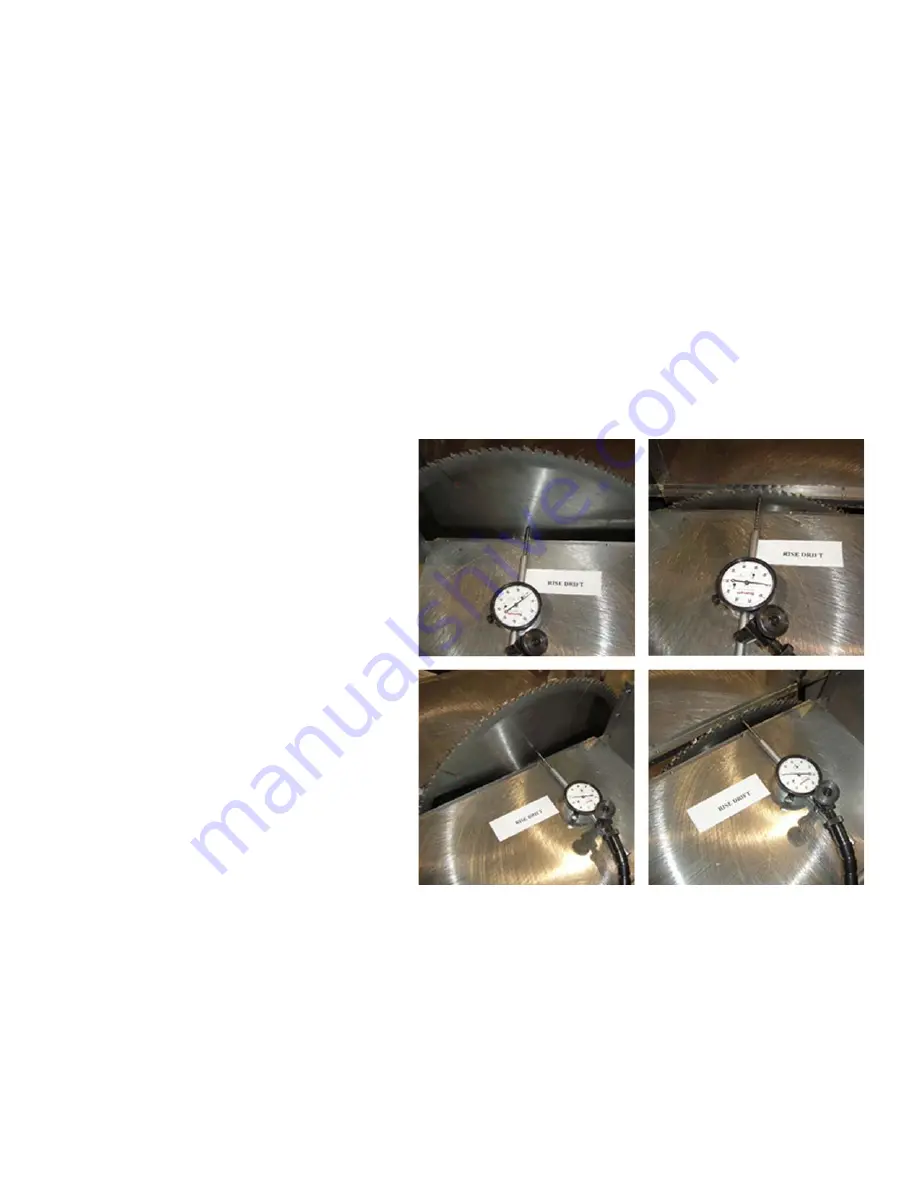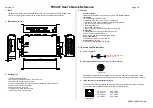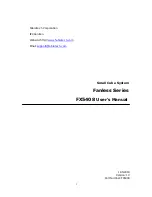
59
Plate Thickness
The plate of a saw blade is often 1/8” to 1/4” thick. The thinner plate means that there is less saw-
dust and potentially less waste. However, thin blades often called thin kerf blades are very sensitive to
heating and wobbling, which in turn means non straight (wavy or snaky) cuts. As a result of this one
factor, most people opt for a thicker and therefore stiffer plate.
Tensioning
Saw blades are pre-tensioned during manufacture to take on a true, flat shape when spinning.
Check the blade for trueness by thumping it with your finger while suspending it through the hole. A
true saw blade will have very little ring. The more ring, the more standing wave it has. Standing wave is
a saw blade deformation that causes an hourglass shaped throat plate cut.
Saw blade wobbling caused by standing wave can seriously affect cut quality. Hammering is a pro-
cess of making sure the blade is true and flat. Plate tension (the stiffness of the plate) is more impor-
tant than the flatness of the plate. Even a perfectly flat plate can wobble if proper tension is not met.
Make sure where ever you send your blades for service is capable of tensioning as well as sharpening
your blades.
Flatness
Once the blade is mounted on the arbor,
it should be flat. When turned by hand, it
should not have any sizable wobble or drift.
Use a dial indicator to check this. Drift can be
a problem with the blade, with the arbor
bearings or collet flatness. Both sides of the
saw blade should be checked with a dial
indicator for drift in both high and low posi-
tions and from the left and right sides of the
blade. Factory testing yielded an acceptable
reading of .003” TIR for drift on both sides of
the blade.
Blade Condition
Waste material in the gullets as well as
pitch buildup on the sides of the blade can
cause it to overheat. Avoid overheating the
blade because heat can ruin the blade
quickly. Another cause of overheating can be
a dull blade. Keep the saw blade clean and
sharp. TigerStop recommends only using
TigerStop specified saw blades.
Saw bed and throat plate
The throat plate must be perfectly flush and level with the saw bed. The TigerSaw throat plate is
very slightly thinner than the depth of the recess for it. To adjust it to be perfectly flush with the saw
bed, a layer of masking tape of the appropriate thickness is added to the under side of the plate.
If the throat plate is too high, it will snag materials passing over it. If it is too low, the material will
deflect into the shallow during saw activation and the resulting cut can be slightly angled. Make sure
the throat plate is perfectly flush.
Содержание TigerSaw 1000
Страница 1: ......
Страница 2: ......
Страница 8: ...5 TigerSaw Cap Guard TigerSaw Guard Back ...
Страница 9: ...6 TigerSaw Guard Sides ...
Страница 10: ...7 TigerSaw Blade Access Door In Feed and Out Feed Table ...
Страница 11: ...8 Pusher Foot ...
Страница 15: ...12 1 Assemble table legs ...
Страница 17: ...14 5 Attach the back fence to the out feed table 6 Attach the material staging tubes to the in feed table ...
Страница 24: ...21 7 Attach the Printer Stand M8 X 35 ...
Страница 66: ......
Страница 67: ......







































